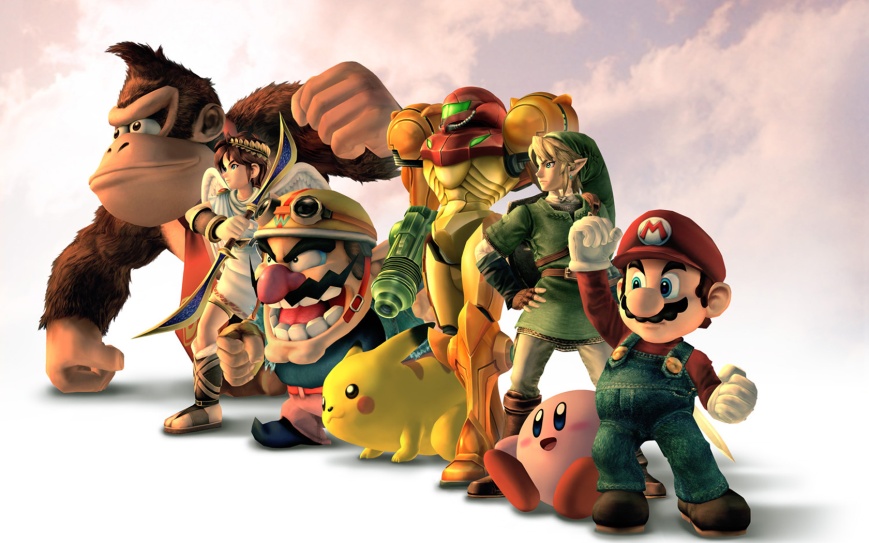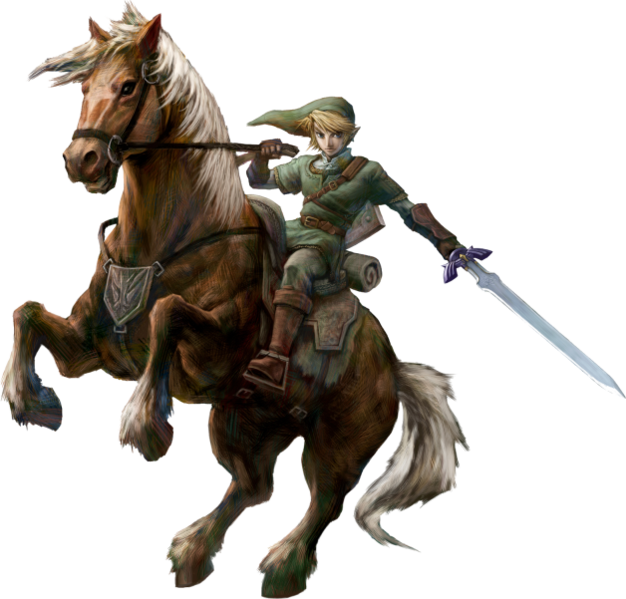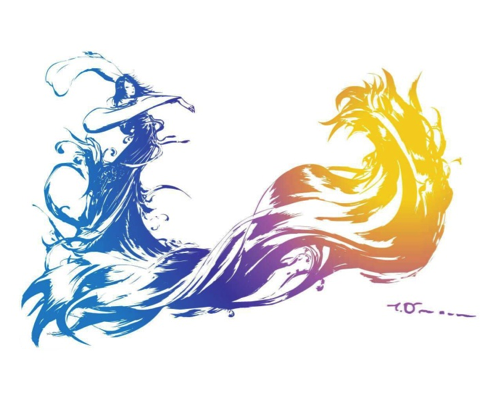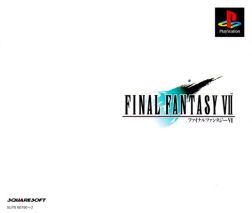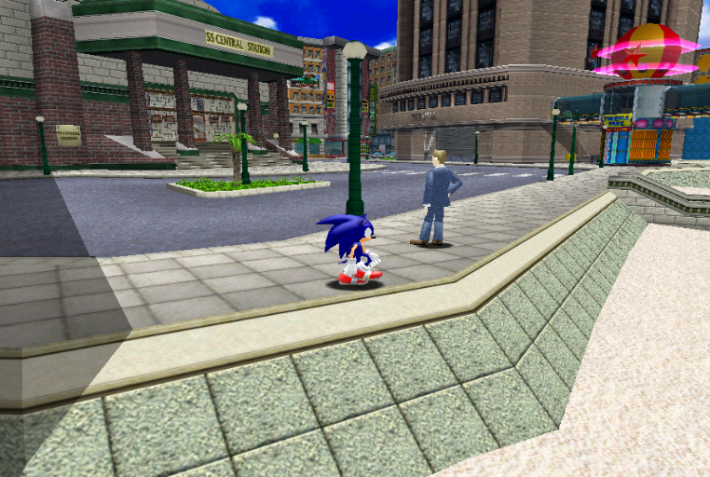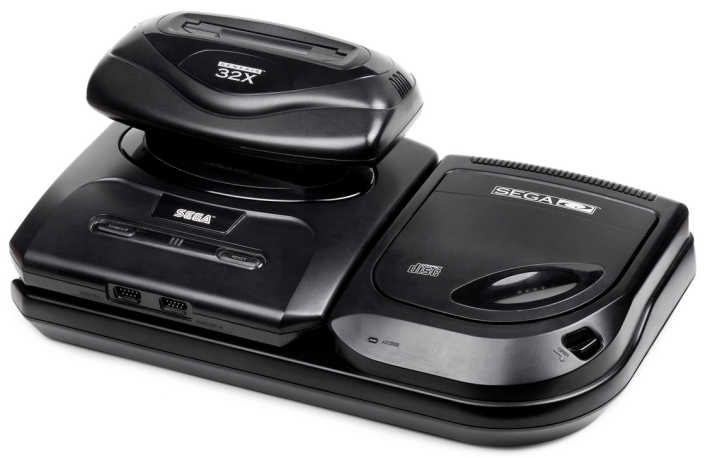 I’ve pre-ordered a Switch. I do however still stand by my original stance that the Switch isn’t an impressive system; it’s ugly, under-powered and will struggle to get 3rd parties back on board. So why then have I pre-ordered? I’ve been a Nintendo fan since back in the NES days and their games still have that something special that keeps me coming back. Don’t get me wrong, they do occasionally churn out some shit. Even big franchises like The Legend of Zelda have the occasional “miss”; I thought both Spirit Tracks and Skyward Sword were among the worst in the franchise. I also like the idea of taking some potentially great games like Super Mario Odyssey and The Legend of Zelda: Breath of the Wild with me while I travel. These days I find myself playing handheld systems like my Vita more often than my home consoles so the Switch might be a great setup for me.
I’ve pre-ordered a Switch. I do however still stand by my original stance that the Switch isn’t an impressive system; it’s ugly, under-powered and will struggle to get 3rd parties back on board. So why then have I pre-ordered? I’ve been a Nintendo fan since back in the NES days and their games still have that something special that keeps me coming back. Don’t get me wrong, they do occasionally churn out some shit. Even big franchises like The Legend of Zelda have the occasional “miss”; I thought both Spirit Tracks and Skyward Sword were among the worst in the franchise. I also like the idea of taking some potentially great games like Super Mario Odyssey and The Legend of Zelda: Breath of the Wild with me while I travel. These days I find myself playing handheld systems like my Vita more often than my home consoles so the Switch might be a great setup for me.
I understand Nintendo get a lot wrong (as we’ll delve into in this article) but there’s a lot of fans who I guess we’d call “fanboys” who are so blinded by their sheer love for everything Nintendo that they cannot and will not accept any criticism thrown at the company. Now to be clear, there’s die hards in both the Sony and Microsoft camps too but Nintendo breed a special kind of loyal fan. In the past I’ve been labelled a Nintendo fanboy and a Sony fanboy but honestly, I’m neither. I criticise things I hate with all 3 video game giants, I just have a tendency to enjoy first party Nintendo games and in recent years my consoles of choice tend to be Sony devices – that’s my personal preference. So let’s explore the special flowers that are Nintendo apologists. I’m going to use a few personal anecdotes in this article which I’m ok with as I’m specifically making an argument about these types of fans, not Nintendo fans in general.
I recently got into a debate on a Facebook group when I saw a post stating “That explains why the pro controller is more expensive, that’s insane it has that all built in. Glad to know that”. The post was accompanied by a brief description of its features. The tech inside the pro controller boasts features such as “motion controls”, “HD rumble” (whatever that will end up being) and “built in amiibo functionality”. Firstly, I’m not totally convinced that these features do explain the high cost of this controller. Doing a quick search, the Xbox One controller retails for around $50 and includes their own version of updated rumble in the form of “Impulse Triggers”. A PS4 DualShock 4 can also be picked up new for a similar price and they too feature new tech such as the light bar, speaker (new to PlayStation controllers) and a “Clickable touchpad”. Arguably of course the Switches HD rumble might be a revolution compared to the rumble of old but do an NFC reader and a fancy update to rumble justify a full $20 increase over the competition? Let’s give the poster the benefit of the doubt here and agree that this “new” tech actually does justify the $20 increase. WHY DO I NEED IT? And here’s my argument that I posted in response:
“That doesn’t mean the majority of players want all that tech. Does everything in your house really need to have the ability to scan amiibo? Or would the main screen be sufficient? I’d certainly take the lack of amiibo scanning in a specific controller if it meant the price was £15 less.”
A second poster then argued that indeed, this same logic could be applied to PS4 or Xbox One controllers. I agreed that indeed that is true but that doesn’t justify Nintendo bumping the cost of their controller up significantly. We as consumers come to expect a certain price bracket for consoles and accessories and indeed on this matter gamers will vote with their wallets I’m sure. The worst part about this is that the pro controller isn’t even the most expensive controller on offer. A set of Joy-Cons will set you back around $90! Journalists and fans alike (well, except for Nintendo apologists) seem up in arms about the price, Polygon seemed to have done the work for me here, after checking Twitter Ben Kuchera stated “I checked Twitter to see if I was just suffering from a case of unrealistic expectations and nope, there seems to be some serious pushback from others about the price of these accessories”1. Jim Sterling commented after the reveal “Let’s look at everything else Nintendo did to kill my interest in the switch”2 before going on to complain about the price of not only the pro controller but other accessories. Colin Moriarty explained on his new show “Colin Was Right”:
“You do have to do something to keep people around. The games aren’t there and they aren’t going to be there and these ridiculous peripheral prices are simply isolating potential customers even more.”3

Gamers could chose to take or leave the console and any accessories; Nintendo has every right to charge whatever they feel is reasonable but get this. Since the NES we’ve seen a notable decline in install base throughout all of their home consoles4, with the Wii being the one anomaly here. The NES for example shifted over 60 million units whereas the Wii U has managed fewer than 14 million units and with the Switch releasing in less than 2 months that figure isn’t likely to creep up much further. With that I’d consider it a reasonable expectation that Nintendo should do everything they can to win back a bit of loyalty. Maybe sell the console for a significant loss in order to get the install base back up? After all they’d make a killing on software, much like the business model Sony and Microsoft have used many times in the past.5 How about charge a reasonable price for extra controllers? Maybe bundle in the ability to charge the Joy-Cons with the included grip rather than having to shell out for a special charging grip?6 So the slightly higher than expected price of controllers and accessories alone isn’t the only issue here. I think a Facebook post I wrote summaries this nicely:
“What exactly would Nintendo have to do in order for you to call them out on it? Shit on your lawn? There are a stack of issues surrounding the switch and so many Nintendo apologists are coming out with excuse after excuse.
Look, it’s not JUST the charging issue here, that’s merely the icing on the cake or should that be cack?”
Let’s address some of the other points then that are contributing to this mess. The launch line-up is really weak, on the launch day itself we have The Legend of Zelda: Breath of the Wild (Ok, here’s a decent first party franchise) and 1-2 Switch in terms of first party titles. As for 3rd party? Skylanders something or another, Just Dance 20 whatever year it is and Super Bomberman R.7 Nothing really to write home about. And as for Zelda, well although this is a beloved Nintendo franchise it really isn’t a big system seller; just take a look at past Nintendo sales figures.8 I’d also add that out of these games 1-2 Switch and Super Bomberman R are the only exclusives, Zelda is also on Wii U and the rest of the bunch are coming to multiple platforms. Ok, so how about games released during 2017? Notable “big” games include Super Mario Odyssey, Xenoblade Chronicles 2, FIFA, NBA 2K18, Mario Kart 8 Deluxe, Splatoon 2 and ARMS. Notice the absence of a lot of major cross platform games? Where are Call of Duty, Battlefield, Resident Evil 7, Kingdom Hearts III, Mass Effect Andromeda, Metal Gear Survive, Red Dead Redemption 2 and South Park: Fractured But Whole to named but a few. Sure, as the saying goes “people buy a Nintendo or Nintendo games, not cross-platform games”. Hmmm, I’d be convinced of that if only the sales figures showed that to be the case. The fact is when most households chose to splash out on a console they are clearly picking the Sony or Microsoft boxes that can play a few great exclusives as well as being supported extensively by 3rd party developers. Think about it, gamers with a bit of excess cash might buy 2 or even all 3 of these home systems but many kids or adults on lower incomes will only buy one console. And these consumers will certainly want a box that gives them a decent variety of games, including games that their friends are talking about. And this brings me to the next comment I found on Facebook:
“The hybrid nature of the console will hold it back from being a mainstream success. But it will likely do pretty well, Zelda at launch, MK8 Splatoon and Mario Odyssey all in the first year, will keep the system selling well all the way through its first year.”
My response to this statement?
“4 games in a year will not “keep the system selling well”, especially when 2 of them are essentially “deluxe” versions of existing games and zelda is not an exclusive.”

The conversation continued with this user stating that I was “forgetting those are four of the biggest games Nintendo has”. The problem is that these “biggest” franchises also made appearances on Wii U and they didn’t shift enough consoles so what makes him think they will just because they are coming to a new platform? Another user then chimed in to tell me games like Mario Kart 8 Deluxe aren’t simply ports like we saw from PS3 to PS4. I’m not sure what he’d consider a port then when Mario Kart 8 Deluxe is (as the name implies) a Deluxe version of an old game, it includes all previous DLC and a couple of extra bits and pieces to sweeten the deal. It is by no means a brand new game and it isn’t being marketed in that way either. To top off this debate the original user then informed me that these games did in fact sell the Wii U console. Really? REALLY? The 85 million or so gamers who bought a Wii but didn’t buy a Wii U might disagree with you there! The final comment from the original user was also a bit of a surprise after I’d mentioned to him that you only have to look at how the media reacted after the second reveal. Proving my point that Nintendo apologists are almost blind to any criticism he noted:
“The “buzz surrounding it died”? In what world are you living in? Ever major gaming, tech, nerd , and even news outlet has covered the Switch conference.”
Well I’m actually referring to the likes of the Jimquisition episode9 on this subject where Jim Sterling does a fine job of highlighting some of the points (and others) that I’ve mentioned here. Jim specifically mentions at the end of the video that he made the episode out of frustration because he believes Nintendo has “the potential to be the best platform holder…”.10 I’m doing much the same thing here, I haven’t written this article to slate Nintendo – I’ve ordered the Switch! I’ve wrote this article to vent my frustration at a company which makes so many stupid mistakes that they really shouldn’t make.
Would you like more proof that the buzz died after the reveal? How about the Kinda Funny guys? Colin specifically stated after the Nintendo reveal11 back in October 2016 “I’m excited to pre-order”.12 After the second reveal Colin commented that he was “not very excited”13 before the guys commented negatively on the price of the accessories14 and everything else for that matter!15 Anecdotally I might also add that during the original reveal I left several comments on forums expressing my dislike of the Switch’s ugly, clumsy design. I was pretty much shot down immediately, not a lot of people agreed with me. Fast forward to the second reveal and forums are now seemly divided down the middle with arguments revolving around the high price of the accessories, the Nintendo network becoming a premium service (more on this soon) and the sparse launch line up. And then there’s the articles, of course it wouldn’t be fair to say that all the Switch press was negative. There are indeed a lot of positive posts and many fans and journalists alike have been won over. But just look at a few of these headlines and I think you’ll agree that Nintendo haven’t exactly knocked it out of the park:
The pricing on Nintendo Switch accessories is a bad, bad joke1
Nintendo Switch online service’s ‘free’ monthly games come with a huge catch161-2-Switch is not the killer app the Nintendo Switch needs17
Nintendo Switch will launch with fewer games than the Wii, Wii U or 3DS18
Nintendo Switch’s bundled Joy-Con grip doesn’t charge controllers19
And I think that sums up Nintendo, there are always caveats with their services, games and products. And talking of services, let’s take a look at Nintendo’s new offerings. First of all there’s news that the Switch’s voice chat is done…wait for it… via a smart phone app!20 That’s right folks, there is no native voice chat built into the Switch, and here’s the reasoning behind it according to NOA’s head honcho Reggie Fils-Aime:
“we want to reinforce the capability to take your experience with you on the go…. The ability to do matchmaking, voice chat through your phone, it’s a hell of a lot more convenient than having a gamer headset stuck into your backpack trying to do that. That’s why we’re doing it the way we are. We see the convenience, we see the ease of delivery. We think it’s going to lead to a better experience.”20
This is another common problem with Nintendo, they do things so against the grain that it defies all logic yet Nintendo will outright defend these decisions, as will their apologists. If the issue here is parental controls then implement controls to block this feature for children. If however the issue really is convenience then why can’t we have the best of both worlds and include voice chat out of the box as well as via a smart device app? Is Reggie seriously trying to say voice chat via a phone is more convenient? Not only does this mean anybody who wants to voice chat needs a couple of hundred pounds worth of mobile phone, but it needs to be charged, have a decent signal and be used separately from the Switch’s interface. And how about the “gamer headset stuck into your backpack”? Is he suggesting you no longer need a headset? So I just sit on the train with my phone next to my ear or with the speaker blearing out? Or do I use a small set of headphones with a microphone? If the latter then why can’t I use that with a Switch instead of the massively inconvenient headset Reggie assumes I need if voice chat was native to the console?
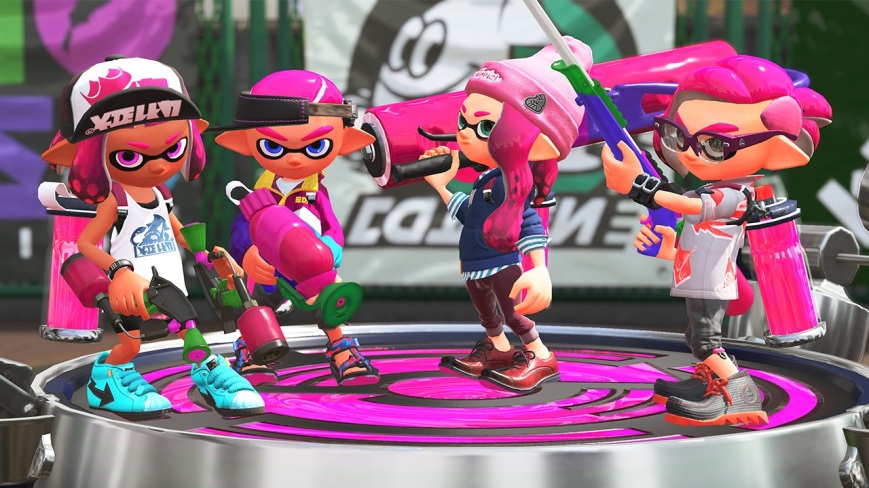
For the record, personally I don’t care about voice chat, especially on a Nintendo console as I’m not a big online gamer. Like voice chat or not though, there’s a hell of a lot of gamers out there who use this feature daily on the PS4 and Xbox One. How can Nintendo ever hope to gain a big fan base when online gamers are denied basic features like this? Yet again though, the apologists help justify Nintendo’s absurd decision. One Facebooker commented “When you make things more difficult for people to use – voice chat – you deserve to be endlessly mocked.” Perhaps he was trolling a little as this was on the Nintendo Voice Chat Facebook group, however, just look at this response “I don’t agree. Nintendo is pivoting towards mobile as a focal point. They approach online differently as such. So, it may not be for you, but mocking is for kids online.” “Pivoting towards mobile”? So that’s the justification for shafting core online gamers?
It seems that voice chat isn’t the only online feature Nintendo is having a stab at butchering either. Much like Xbox Live and PSN, Nintendo will now also start charging for online functionality and in return gamers can expect online lobbies with voice chat, exclusive deals and monthly game downloads from the NES and SNES libraries.21 Here’s the catch, not only have Nintendo miserably failed with all online ventures on previous consoles when compared to Sony and Microsoft but their new paid for service will be giving fans access to an 8 or 16-bit game for one month only!22 Ok, so I’m a firm believer that gameplay is king and I also think that some of the finest games in existence can be found on both the NES and SNES but there’s no denying that offering gamers limited access to 20 or 30 year old games for a month isn’t exactly on par with their competitors. Sony alone offers 6 games per month (2 on each platform from PS3, PS4 and Vita), not forgetting that quite often a selection of these games are also cross-platform so the argument of “I only have a PS4 though” doesn’t wash here. Arguably a lot of these games aren’t worth the bandwidth they use to download but there have also been some great games on the service over the years. And what’s more, both Sony and Microsoft let you play these games for the entirety of your subscription. Having now been a subscriber for 5 or 6 years myself I literally have access to hundreds of games.
I actually put this question to members of the Nintendo Voice Chat Facebook group and in general most responses agreed with me. There were however a couple which tried to justify Nintendo’s decisions and put a positive spin on things. Here’s a couple:
“I like it the flavor of the month concept to it. In reality most of these games take a few hours to beat. So a month should be more than enough time with an NES or SNES game.”
“In a way wouldn’t having it only as a month motivate people to play right away, fill the online modes and most will be done with NES and SNES games after a month anyway? Just a thought.”
“The good thing about the monthly thing would that it would encourage a lot of people to play it that month. This would make it a lot easier to find people to play online with during that month.”
“I like it, i think it will be great for everyone to have access to the same title at the same time.”
Now, I understand what the first commenter is suggesting. In general a lot of NES / SNES era games can realistically be beaten with a couple of hours. However, what I don’t agree with is justifying this decision just because a game is short. Let’s put it this way, sometimes I might buy a game or get one free with PS+ but not actually get around to playing it for months, or even years in some cases. Why would Nintendo putting a restriction on the availability of the game be a good thing? Isn’t it better for the gamer to decide when they want to play the game instead of having it dictated to them?
I’d urge you all to throw away your nostalgia and throw away your biases and really take a look at Nintendo’s decisions. This is a company I grew up with, I love their consoles and love their games but there’s nothing wrong with calling out a company when they do something shitty. It’s pretty clear from Nintendo’s dwindling sales figures that they are struggling to stay relevant and keep up with Microsoft and Sony and if they at least don’t try and offer similar services and technology they will eventually fall.

Finally, please go and watch both the Colin Was Right episode “Same Old Nintendo” and the Jimquisition episode “What Nintendo Fucked Up With The Switch So Far”. Both of these episodes are excellent, level headed and delivered by Nintendo fans.
A note about any Facebook quotations I’ve used.
I’ve left quotes unaltered, including spelling and typos. I felt this was the best way to avoid misquoting anybody. I’ve left out any citation here; they are simply being used as anecdotes to protect the users anonymity.
1 – http://www.polygon.com/2017/1/13/14261342/nintendo-switch-extra-controller-price-terrible
2 – https://youtu.be/7fH_wl8ceAg?t=341
3 – https://youtu.be/LenzNAyRnWU?list=PLy3mMHt2i7RJjrxBVoVL5tDTbhimG4NFz&t=540
4 – https://www.nintendo.co.jp/ir/en/sales/hard_soft/
5 – http://www.pcworld.com/article/127906/article.html
6 – http://www.eurogamer.net/articles/2017-01-16-nintendo-switchs-basic-joy-con-grip-doesnt-charge-controllers
7 – https://twitter.com/NintendoAmerica/status/820006323328864256/photo/1?ref_src=twsrc%5Etfw
8 – http://uk.ign.com/articles/2014/01/29/these-are-nintendos-lifetime-hardware-and-software-numbers
9 – https://www.youtube.com/watch?v=7fH_wl8ceAg&t=352s
10 – https://youtu.be/7fH_wl8ceAg?t=681
11 – https://www.youtube.com/watch?v=f5uik5fgIaI
12 – https://youtu.be/HONQAWV5nxQ?t=754
13 – https://youtu.be/QdNiaVEzrwM?t=333
14 – https://youtu.be/QdNiaVEzrwM?t=452
15 – https://youtu.be/QdNiaVEzrwM?t=511
16 – http://www.polygon.com/2017/1/13/14266290/nintendo-switch-monthly-games-not-free
17 – http://www.polygon.com/2017/1/13/14268204/1-2-switch-nintendo-switch-pre-review
18 – http://www.polygon.com/nintendo-switch/2017/1/13/14263186/nintendo-switch-lineup-wii-wiiu-3ds-comparison
19 – http://www.eurogamer.net/articles/2017-01-16-nintendo-switchs-basic-joy-con-grip-doesnt-charge-controllers
20 – http://uk.ign.com/articles/2017/01/14/nintendo-talks-voice-chat-online-approach-for-switch
21 – http://uk.ign.com/articles/2017/01/13/nintendo-switch-online-services-will-be-free-at-first
22 – https://twitter.com/kobunheat/status/819956802741747712?ref_src=twsrc%5Etfw






